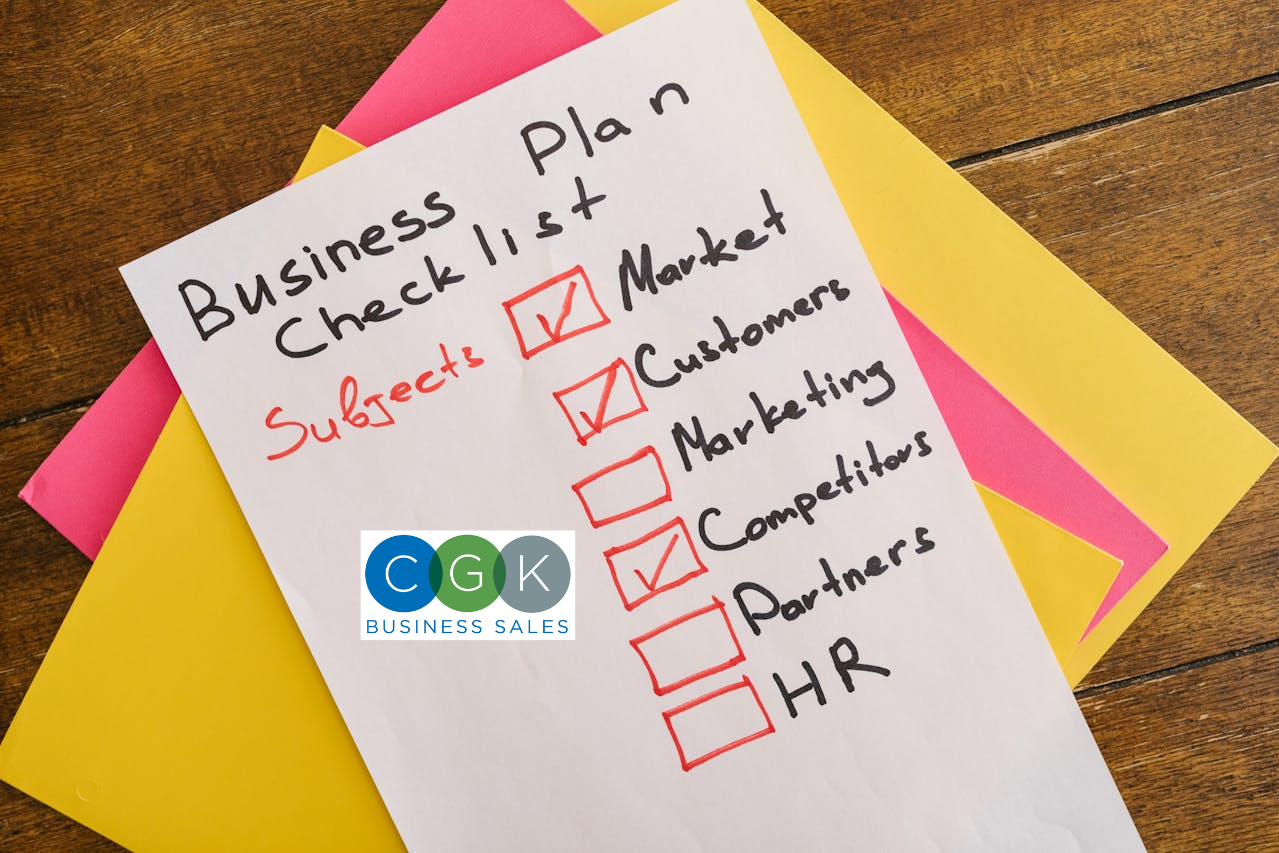Business owners who are ready to sell their business will often wonder, what is my business worth?
This is likely the first question they’ll ask themselves since it is the most important; the value of the business determines how much they can obtain if they sell the business. But, before you plug a couple of numbers into a business valuation calculator or base a business valuation on a rule of thumb such as a business’s revenue, let’s consider a few things. Business valuations are complex. No two businesses are the same. A mistake can cost you hundreds of thousands, if not millions of dollars. Is that worth it?
Business owners who are ready to sell their business will often wonder, what is my business worth?
This is likely the first question they’ll ask themselves since it is the most important; the value of the business determines how much they can obtain if they sell the business. But, before you plug a couple of numbers into a business valuation calculator or base a business valuation on a rule of thumb such as a business’s revenue, let’s consider a few things. Business valuations are complex. No two businesses are the same. A mistake can cost you hundreds of thousands, if not millions of dollars. Is that worth it?
Rules of Thumb
If you’d like a few simple rules of thumb, do NOT start with a percentage or multiple of revenue. Revenue, while necessary, does not ultimately pay the bills. Other rules of thumb might be industry-specific, such as a multiple of renewal revenue in an insurance agency. This is a dangerous way to value a business. These rules of thumb might tell you what cash flow ‘should’ be, but what if the seller is selling products or services at cost or slightly above cost? This increases revenue, but not cash flow. Want to do it right? Start with what the business earns in a given year. Most business brokers would define this as Seller’s Discretionary Earnings or SDE, for short. You can think of SDE as EBITDA (Earnings Before Interest, Taxes, Depreciation, & Amortization) + Owner’s Salary (salary, NOT distributions) + one-time adjustments. Most small businesses trade for 1 – 4 times their annual Seller’s Discretionary Earnings (SDE). Why 1 versus 4? What adjustments are included in SDE? Is SDE the same as net profit (answer = no)? These are the million dollar questions. Most online guides are wrong. You must know what adjustments are acceptable to buyers and the banks. This is also where most business brokers go off the tracks. Here at CGK, we know what is acceptable and what is not.
Most medium-sized businesses trade off of a multiple of adjusted EBITDA (Earnings Before Interest, Taxes, Depreciation, and Amortization). Depending on the size of the business, the trends, and the industry, this is normally 2 – 5 times for lower-middle market businesses and 3 – 8 times for solid, middle-market companies. When do we use adjusted EBITDA versus SDE? What’s the difference between the two? What adjustments are acceptable for these businesses? What about multiple expansion or contraction during the business cycle? You may say, “These numbers are backwards-looking, what about my future numbers?” “What’s this ‘intrinsic value’ that Warren Buffet talks about?” Do you see the problem with ‘rules of thumb’? For a relatively inexpensive business valuation, especially compared to the money at risk, CGK Business Sales can guide you down the right path, so you can make an informed decision. Can you really afford to make a mistake?
Multiple Approaches to Business Valuations
There are a number of different business valuation methods that are in use today, but three that any business owner will want to know about are the asset approach, the income approach, and the comparable transactions approach.
Rules of Thumb
If you’d like a few simple rules of thumb, do NOT start with a percentage or multiple of revenue. Revenue, while necessary, does not ultimately pay the bills. Other rules of thumb might be industry-specific, such as a multiple of renewal revenue in an insurance agency. This is a dangerous way to value a business. These rules of thumb might tell you what cash flow ‘should’ be, but what if the seller is selling products or services at cost or slightly above cost? This increases revenue, but not cash flow. Want to do it right? Start with what the business earns in a given year. Most business brokers would define this as Seller’s Discretionary Earnings or SDE, for short. You can think of SDE as EBITDA (Earnings Before Interest, Taxes, Depreciation, & Amortization) + Owner’s Salary (salary, NOT distributions) + one-time adjustments. Most small businesses trade for 1 – 4 times their annual Seller’s Discretionary Earnings (SDE). Why 1 versus 4? What adjustments are included in SDE? Is SDE the same as net profit (answer = no)? These are the million dollar questions. Most online guides are wrong. You must know what adjustments are acceptable to buyers and the banks. This is also where most business brokers go off the tracks. Here at CGK, we know what is acceptable and what is not.
Most medium-sized businesses trade off of a multiple of adjusted EBITDA (Earnings Before Interest, Taxes, Depreciation, and Amortization). Depending on the size of the business, the trends, and the industry, this is normally 2 – 5 times for lower-middle market businesses and 3 – 8 times for solid, middle-market companies. When do we use adjusted EBITDA versus SDE? What’s the difference between the two? What adjustments are acceptable for these businesses? What about multiple expansion or contraction during the business cycle? You may say, “These numbers are backwards-looking, what about my future numbers?” “What’s this ‘intrinsic value’ that Warren Buffet talks about?” Do you see the problem with ‘rules of thumb’? For a relatively inexpensive business valuation, especially compared to the money at risk, CGK Business Sales can guide you down the right path, so you can make an informed decision. Can you really afford to make a mistake?
Multiple Approaches to Business Valuations
There are a number of different business valuation methods that are in use today, but three that any business owner will want to know about are the asset approach, the income approach, and the comparable transactions approach.
Asset Approach to Business Valuation
This business valuation approach is done by determining the values of the assets and liabilities for the business. The liabilities are subtracted from the assets, and the difference is going to be the value of the business. This can be a great way to determine the value of the business if the business may not continue and needs to be liquidated, as it’s relatively simple to determine the value of all assets and liabilities. However, this doesn’t take into account things that are valuable to the business but that don’t have a price that is easily determined, such as intangible assets. In general, the asset approach is usually not used for businesses that will remain as a going-concern, though it can be a baseline figure.
Income Approach to Business Valuation
This method takes into account what the business will make in the future and discounts this amount back to a present value. Examples of this approach include discounted cash flow and capitalization of earnings methods. For instance, in the discounted cash flow (DCF) methodology, the future amount the business should likely earn is determined. Then, a discount rate is applied to determine the terminal value and present sum of the business’s future cash flows. This determines the current value of the business. Sound confusing? It is. A properly trained M&A advisor can walk a seller through this important way of valuing a business. This lets potential buyers see how well the business could do in the future, plus allows for businesses with uneven cash flows to be properly valued. The income approach is the theoretically correct way of valuing the business, so it cannot be ignored. Though, predicting future cash flows is, of course, hard, especially when it comes to the cyclical nature of most businesses and economic cycles.
Comparable Transactions Approach to Business Valuation
This is a common way to determine the value of a business. The business model is compared with similar ones that have been sold recently to determine the value of the business. This method takes into account the current market for buying and selling businesses, and is a common methodology for business valuations. This method can suffer from peaks and valleys in different economic cycles. It can still be an effective way to market a business and is one that has often been used very often in the past to determine the value of a business before it is sold. As part of the comparable transactions approach, many buyers and sellers may speak of market multiples, often valuing the business as a multiple of adjusted EBITDA (earnings before interest, taxes, depreciation, and amortization) for larger businesses or SDE (seller’s discretionary earnings) for smaller, main street transactions. There are often adjustments made for buying the entire business, called control premiums, or discounts, for lack of marketability or size. Which multiple is used and the adjustments made, either via add-backs or discounts/premiums, can make or break the value for a seller
What They're Saying
OUR TEAM
DavidSmoot
ManagingDirector
David Smoot has 20 successful years working for Fortune 500 companies in sales and finance and owning his own small businesses. His leadership roles included sales, finance, managing multi-million dollar product launches, training new ... (click David's picture to read more)
Confidential. Contact. Conversation.
Let's get started.
The experts at CGK Business Sales are ready to talk to you about business valuation. And it’s always 100% confidential.
While we certainly love when you call, as you can imagine, we spend the majority of our day on the phone, closing deals, so we love it even more when you use this form to email us! We will get back to you as quickly as possible! Seriously! This form only goes to Greg’s email (CGK’s owner), so it’s completely confidential!
Our unique selling process is tailored for businesses with at least $2 million in revenue (up to $100 million) and $500,000 to $10,000,000 in owner’s profit.
Austin Office:
2720 Bee Caves Road
Austin, TX 78746
(512) 900-5960
San Antonio Office:
700 N Saint Mary's St
San Antonio, TX 78205
(210) 526-0094
Houston Office:
1200 Smith St
Houston, TX 77002
(713) 588-0240
Dallas Office:
325 N Saint Paul St
Dallas, TX 75201
(469) 998-1968
Phoenix Office:
40 N Central Ave
Phoenix, AZ 85004
(602) 714-7470
Colorado Springs Office:
102 S Tejon St
Colorado Springs, CO 80903
(719) 471-0115
Denver Office:
1600 Broadway
Denver, CO 80202
(303) 974-7978
Nashville Office:
424 Church St
Nashville, TN 37219
(615) 800-7118
Louisville Office:
312 S 4th St
Louisville, KY 40202
(502) 287-0332
Baltimore Office:
111 S Calvert St
Baltimore, MD 21202
(410) 777-5759
Washington DC Office:
1050 Connecticut Ave NW
Washington, DC 20036
(202) 888-6120
















